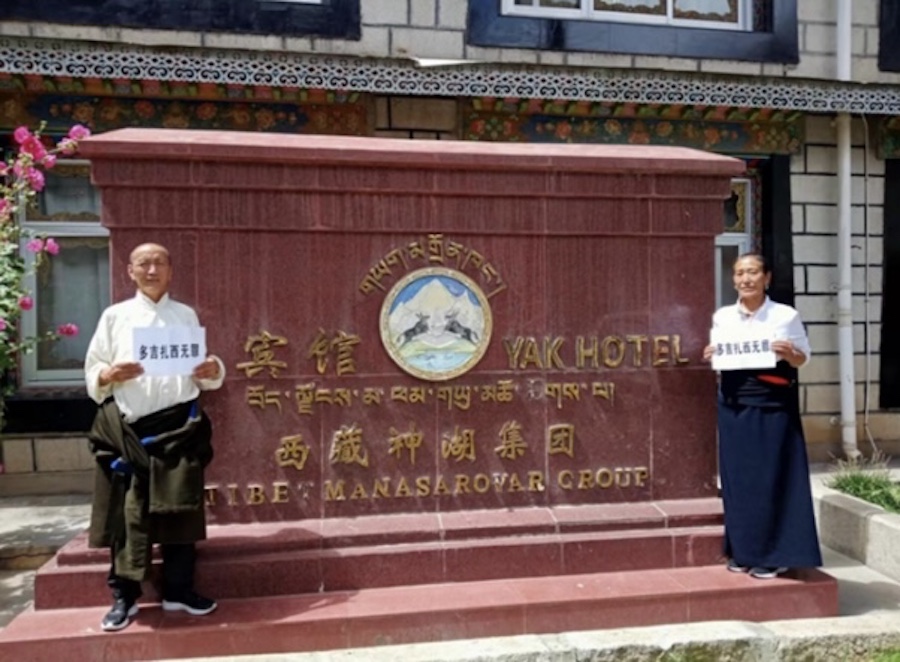 By Johnna Rizzo
By Johnna Rizzo
for National Geographic News
In a new biography, Tenzing: Hero of Everest, recently issued by National Geographic Books, author Ed Douglas profiles the life of Tenzing Norgay. Together with Edmund Hillary, the climber became the first human to stand atop the world’s highest mountain. Douglas charts Tenzing’s journey from his youth in Tibet as the son of a poor yak herder to an adulthood marked by international acclaim as a Sherpa and a citizen of India. Douglas recently spoke with National Geographic News about Tenzing’s life and accomplishment on the eve of the 50th anniversary of his historic climb.
How did you become interested in Tenzing Norgay’s life?
I suppose it was a combination of things, really. I was fascinated by Everest as a kid, because I’d been to see [English climber] Chris Bonington’s Southwest Face of Everest lecture. But when the Kangshung Face and other routes were climbed in the 80s, and the mountain became more commercial, I lost interest as a climber.
I became interested again around the 40th anniversary when I met the 1953 team. I became aware of the life on the ground at Everest—the culture not the climbing. Tenzing was the natural next step. He was the most famous Sherpa and there was no biography of him.
Despite the fact that Edmund Hillary came from New Zealand and Tenzing was Sherpa, the 1953 Mount Everest Expedition was largely British. Was Tenzing a hero figure for you as a young boy growing up in England?
There was a real gulf between what we knew in the mainstream, and what the climbers knew. I knew a very two-dimensional figure: The smiling Sherpa one step behind the sahib.
You’ve spent time in Tibet, both as a journalist and climber. Did that add any dimension to your work?
It added all kinds of things. It answered the questions in my mind regarding the reasons for Tenzing leaving Tibet as a boy. I found out things no one in his family knew. Going to the site of his birth was deeply moving. You realize the length of his journey that was fraught with difficulty, but ultimately successful. I was lucky to have been able to interview several members of his family and most of them were very supportive of the project. But, of course, family is only one part of someone’s life.
How is Tenzing’s family affected by his legacy?
They are tremendously affected. The children of his third wife went to college in America. Most of them live in America and are successful there. They are looked to for any project on Everest. Everest changes lives. I don’t believe anyone was more changed than Tenzing and his family. That’s why Tenzing did it, I believe. To give this to his family.
Tenzing is remembered as a Sherpa. How is that significant?
This is a very difficult issue. He was born in Tibet to Tibetan parents. When he went to the Khumbu, he was considered an outsider. But later he married a Sherpani and raised his children as Sherpas. Also, there is the conflation in the West of Sherpa culture with sherpa as a profession, which is like a guild or a union. The Himalaya is an extremely complex area. What we have to remember is that there are tensions and rivalries in that area, just as there are in our own. We just sort of lump all the people living in this region together but there are fine distinctions that are crucial.
To me, their motivations don’t seem all that different from ours. The same issues drove Tenzing Norgay as drove [early 20th-century English climber] George Mallory, in my opinion: recognition, prestige, security. Tenzing desperately wanted financial security. To climb big mountains, you need to have a huge motivation. For Tenzing that motivation was changing his economic situation. He was the first Sherpa to realize you could do this on Everest.
Tenzing carried the flags of both Nepal and India to the summit of Everest. Both had become independent countries six years earlier. How would the story have been different if Tenzing hadn’t chosen to align himself with India after his descent?
I think he would have enjoyed a better reputation in Nepal. He had a lot of problems. Nations were coalescing at that time. When he was young, these were border zones. By the time he was an adult, these nations were forming hard boundaries. I can understand why he picked India. His prospects were better there. He was everything [Jawaharlal] Nehru, [independent India’s first Prime Minister,] could have wanted. Someone from one of the tribes doing something amazing…[and] equal to the colonial power—a role model. In contrast, the people from the land of his birth never enjoyed the same benefits from the Everest industry, something that is being ignored during the current celebrations.
Why does Tenzing have so much resonance as a public figure?
He was a warm, decent man. Very positive, always wanted to do well and had real concern for others. British climber Mike Westmacott tells a story that illustrates the kind of man Tenzing was. Tenzing had been responsible for making the arrangements for the 25th anniversary of the first ascent. A Landrover that Tenzing owned had broken down, and he was distraught that his friends had to wait—in tears, literally, he was so upset.
He was the first humbly-born Asian who rose to global fame and through his own efforts. It’s a very rare story for South Asia where caste is such an issue. It’s a very American story in a lot of ways.
What do you hope to have accomplished with this book?
I wanted to give credit where it was due. I wanted to reawaken public interest in Tenzing’s achievement. But I also wanted to put him in context. He is not a figure from our imaginations. There were cultural pressures that he was under that he had to fight in order to achieve what he did.









